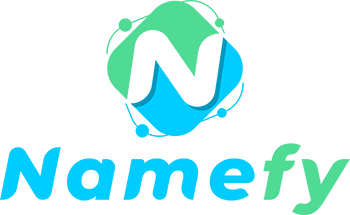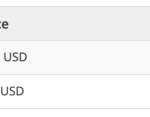Check and download Term 2 CBSE Class 12 Computer Science Syllabus 2022 for the upcoming Board exams. The link to download the Term 2 CBSE Class 12 Computer Science Syllabus 2022 PDF is given at the end of this article. It contains important details related to the preparation for Term 2 CBSE Class 12 Computer Science board exam 2022.
Term 2 CBSE Class 12 Computer Science Syllabus 2022:
|
Unit No |
Unit Name |
Term 2 |
|
I |
Computational Thinking and Programming – 2 |
5 |
|
II |
Computer Networks |
10 |
|
III |
Database Management |
20 |
|
Total |
35 |
TERM 2:
Unit I: Computational Thinking and Programming – 2
Data Structure: Stack, operations on stack (push & pop), implementation of stack using list.
Unit II: Computer Networks
● Evolution of networking: introduction to computer networks, evolution of networking (ARPANET, NSFNET, INTERNET)
● Data communication terminologies: concept of communication, components of data communication (sender,receiver, message, communication media, protocols), measuring capacity of communication media (bandwidth, data transfer rate), IP address, switching techniques (Circuit switching, Packet switching)
● Transmission media: Wired communication media (Twisted pair cable, Coaxial cable, Fiber-optic cable), Wireless media (Radio waves, Microwaves, Infrared waves
● Network devices (Modem, Ethernet card, RJ45, Repeater, Hub, Switch, Router, Gateway, WIFI card)
● Network topologies and Network types: types of networks (PAN, LAN, MAN, WAN), networking topologies (Bus, Star, Tree)
● Network protocol: HTTP, FTP, PPP, SMTP, TCP/IP, POP3, HTTPS, TELNET, VoIP
● Introduction to web services: WWW, Hyper Text Markup Language (HTML), Extensible Markup Language (XML), domain names, URL, website, web browser, web servers, web hosting
Unit III: Database Management
Database concepts: introduction to database concepts and its need
Relational data model: relation, attribute, tuple, domain, degree, cardinality, keys (candidate key, primary key, alternate key, foreign key)
Structured Query Language: introduction, Data Definition Language and Data Manipulation
Language, data type (char(n), varchar(n), int, float, date), constraints (not null, unique, primary
key), create database, use database, show databases, drop database, show tables, create table, describe table, alter table (add and remove an attribute, add and remove primary key), drop table, insert, delete, select, operators (mathematical, relational and logical), aliasing, distinct clause, where clause, in, between, order by, meaning of null, is null, is not null, like, update command, delete command
Aggregate functions (max, min, avg, sum, count), group by, having clause, joins : Cartesian product on two tables, equi-join and natural join
Interface of python with an SQL database: connecting SQL with Python, performing insert, update, delete queries using cursor, display data by using fetchone (), fetchall (), rowcount, creating database connectivity applications
Practical
|
S.No |
Term 2 |
|
|
1 |
Lab Test 1. Python program |
2 |
|
2. 3 SQL Queries based on one/two table(s), 2 output questions based on SQL queries |
4 |
|
|
2 |
Report file: Term – 1: Minimum 15 Python programs based on Term – 1 Syllabus Term – 2 : – Minimum 3 Python programs based on Term-2 Syllabus – SQL Queries – Minimum 5 sets using one table / two tables. – Minimum 2 programs based on Python – SQL connectivity. |
3 |
|
3 |
Project (using concepts learnt in Classes 11 and 12) Term – 1 : Synopsis of the project to be submitted by the students (documentation only, may not submit the code during Term – 1) Term – 2 : Final coding + Viva voce (Students will be allowed to modify their Term 1 document and submit the final executable code.) |
5 |
|
4 |
Viva voce |
1 |
Term-2
Python Programming
● Write a Python program to implement a stack using list.
Database Management
● Create a student table and insert data. Implement the following SQL commands on the student table:
o ALTER table to add new attributes / modify data type / drop attribute
o UPDATE table to modify data
o ORDER By to display data in ascending / descending order
o DELETE to remove tuple(s)
o GROUP BY and find the min, max, sum, count and average
o Joining two tables.
● Similar exercises may be framed for other cases.
● Integrate SQL with Python by importing a suitable module.
Database Management
● Create a student table and insert data. Implement the following SQL commands on the student table:
o ALTER table to add new attributes / modify data type / drop attribute
o UPDATE table to modify data
o ORDER By to display data in ascending / descending order
o DELETE to remove tuple(s)
o GROUP BY and find the min, max, sum, count and average
● Similar exercises may be framed for other cases.
● Integrate SQL with Python by importing a suitable module.
7. Suggested Reading Material
NCERT Textbook for COMPUTER SCIENCE (Class XII)
Support Materials on the CBSE website.
8. Project
The aim of the class project is to create something that is tangible and useful using Python file handling/Python-SQL connectivity. This should be done in groups of two to three students and should be started by students at least 6 months before the submission deadline. The aim here’s to find a real world problem that is worthwhile to solve.
Students are encouraged to visit local businesses and ask them about the problems that they are facing.
For example, if a business is finding it hard to create invoices for filing GST claims, then students can do a project that takes the raw data (list of transactions), groups the transactions by category, accounts for the GST tax rates, and creates invoices in the appropriate format. Students can be extremely creative here.
They can use a wide variety of Python libraries to create user friendly applications such as games, software for their school, software for their disabled fellow students, and mobile applications, of course to do some of these projects, some additional learning is required; this should be encouraged.
Students should know how to teach themselves.
The students should be sensitised to avoid plagiarism and violations of copyright issues while working on projects. Teachers should take necessary measures for this.
Term 2 CBSE Class 12 Computer Science Syllabus 2022: CBSE Class 12 Board Exam 2022





